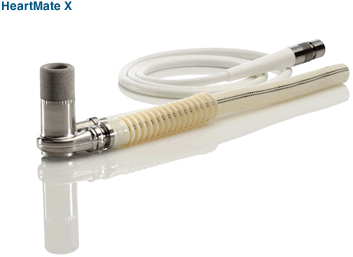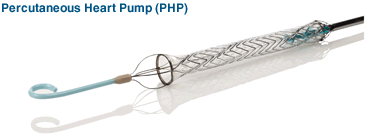

components, and we look forward to continuing system-level reliability testing and beginning Good Laboratory Practice (GLP) animal studies during 2011, leading to a
first-in-man implant at the end of 2012.
Work on HeartMate X, our miniaturized chronic VAD platform, is also well underway.
This device, which leverages our proven HeartMate II bearing technology, is designed to provide partial and full support, with highly versatile placement and cannulation
options. As envisioned, this device would result in less invasive surgery and provide the capabilities to meet the needs of earlier-stage patients as well as those requiring
right ventricular or bi-ventricular support.
With respect to our cross-platform technologies designed to be incorporated across current and future offerings, our key initiatives include the development of a fully implantable system, including an implantable battery and controller and an energy transfer system. These features will eliminate the need for a percutaneous lead and should result in lower infection rates and a significant improvement in patient quality of life. Other programs are addressing the development of infection reduction technologies, remote patient monitoring capabilities, and new tools to facilitate implant procedures.
A critical component of our longer-term growth strategy is the Percutaneous Heart Pump (PHP). PHP is a catheter-based pump designed to address several under-served patient populations, such as unstable acute myocardial infarction and high-risk percutaneous coronary intervention, providing Thoratec with access to a potential market opportunity of more than $1 billion annually. We have made significant progress in demonstrating PHP’s capabilities in bench models, and we expect to finalize design and enter preclinical testing during the coming year, leading to a first-in-man implant at the end of 2012.
